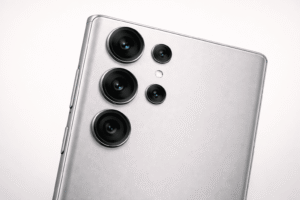In a time when reliable internet is as essential as electricity, I decided to test out Elon Musk’s satellite internet service, Starlink. For 30 consecutive days, I replaced my regular broadband with Starlink to see if it could deliver on its promises of high speeds, low latency, and connectivity even in remote areas. The results? They were both surprising and shocking.
The Setup Process
Getting started with Starlink in 2025 was easier than I expected. The kit came in a small box containing the Starlink dish (dubbed “Dishy”), a Wi-Fi router, a mounting base, and cables.
Setup took less than 20 minutes. I simply plugged everything in, connected via the Starlink app, and placed the dish in an open area with a clear view of the sky. Unlike older satellite internet providers, Starlink uses a constellation of low Earth orbit (LEO) satellites, significantly reducing latency.
The app told me the dish’s positioning, and I was online within minutes.
Also read: Grok 5 Release in 2025: Could Elon Musk’s AI Be the First True AGI
Speed and Performance
This is where things got interesting. During my 30-day test, I tracked speeds at different times of the day, and the results were impressive.
Download speeds generally ranged from 150 Mbps to 280 Mbps, sometimes exceeding 300 Mbps. Upload speeds averaged between 25 and 40 Mbps, which proved sufficient for tasks like video calls, remote work, and cloud backups.
Latency was another pleasant surprise, consistently between 25 and 40 milliseconds, much better than traditional satellite internet, which often has delays of over 600 milliseconds.
In real-world use, Starlink performed even better than expected. Streaming services like Netflix, YouTube, and Disney+ played 4K content smoothly without any buffering.
Video conferencing was smooth and reliable, and online gaming felt responsive and lag-free, something I never imagined satellite internet could do.
This level of performance made Starlink feel comparable to urban broadband, a huge step forward for underserved areas.
Reliability and Downtime
One of my biggest concerns was reliability and whether Starlink would drop in bad weather.
During light rain, I noticed almost no performance degradation, and the connection remained strong throughout.
Even during heavy storms, while the signal would occasionally drop for 10 to 20 seconds, it would automatically reconnect without any interference.
Over a 30-day period, the total downtime was less than 30 minutes, which is much better than my previous experience with rural DSL. This showed me that Starlink is not only fast, but also reliable enough for working from home, making video calls, and enjoying uninterrupted entertainment.
Also read: How the Google Pixel 10 Pro’s Tensor G5 Chip Could Redefine Flagship Performance in 2025
Costs and Value
Starlink isn’t cheap. In 2025, the starting price for a hardware kit will be around $599, and a monthly subscription will be $120-$140 depending on location.
For those living in cities with access to fiber networks, this may not be the best option. But for rural and remote users, Starlink offers speeds comparable to urban broadband, something that wasn’t possible just a few years ago.
Who Is Starlink For?
After using it for 30 days, I can confidently say that Starlink is best suited for those living in areas where traditional internet providers fall short. Rural residents with limited or no broadband access can finally enjoy speeds that rival urban connections.
Travelers and RV owners will also benefit because Starlink now supports mobility options, making it possible to stay connected even on the go.
It’s equally useful for remote workers who rely on reliable video calls and cloud connectivity to do their work without interruption.
Gamers and streamers in areas where internet service providers are slow will also see a dramatic improvement in their online experience.
If you already have access to fast and affordable fiber internet, Starlink may not be necessary. But for everyone else, it’s a real game-changer.
The Verdict After 30 Days
Starlink exceeded my expectations. I expected occasional glitches, lag, or low reliability, but instead, I got cable broadband-like speeds, low latency for gaming, and surprisingly good performance even in bad weather.
While the price may be high, the availability of reliable internet even in areas previously left behind makes it worth considering. If Starlink continues to expand and prices continue to fall, it could redefine the way the world connects online.
FAQs
How easy is it to set up Starlink at home?
The setup process is quick and simple. The kit comes with a dish, Wi-Fi router, cables, and a mounting base. With the help of the Starlink app, you can position the dish in an open area and be online in less than 20 minutes.
What kind of internet speeds can I expect with Starlink?
Over a 30-day test, download speeds ranged between 150 Mbps and 280 Mbps, occasionally exceeding 300 Mbps. Upload speeds stayed between 25 and 40 Mbps, and latency was consistently low at 25–40 ms.
Does bad weather affect Starlink performance?
Yes, TECNO has been aggressively pushing 5G-enabled smartphones, so it’s very likely the new ultra-thin model will support it.
Is Starlink a good value compared to other internet options?
For urban users who already have access to cheap, fast fiber, Starlink may not be the best value. However, for rural and remote areas where broadband options are limited, Starlink offers speeds and reliability that were previously unavailable.
Who would benefit most from using Starlink?
Starlink is best suited for rural residents, travelers and RV owners, remote workers who depend on video calls, and gamers or streamers in areas with slow internet service providers.







